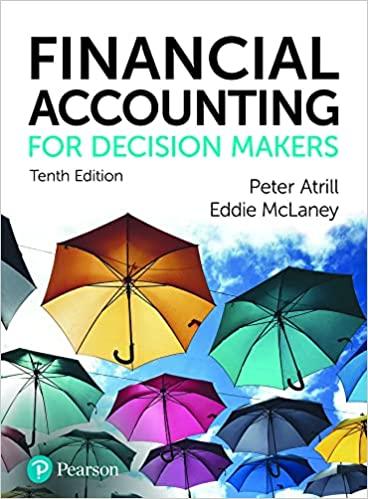Answered step by step
Verified Expert Solution
Question
1 Approved Answer
please help me with these questions Rust Industrial Systems Company is trying to decide between two different conveyor belt systems. System A costs $295,000, has
please help me with these questions 

Rust Industrial Systems Company is trying to decide between two different conveyor belt systems. System A costs $295,000, has a four-year life, and requires $77,000 in pretax annual operating costs. System B costs $355,000, has a six-year life, and requires $83,000 in pretax annual operating costs. The company always needs a conveyor belt system; when one wears out, it must be replaced. Assume the tax rate is 21 percent and the discount rate is 8 percent. Calculate the EAC for both conveyor belt systems. (A negative answer should be indicated by a minus sign. Do not round intermediate calculations and round your answers to 2 decimal places, e.g., 32.16.) System A System B Which conveyor belt system should the firm choose? System A O System B Esfandairi Enterprises is considering a new three-year expansion project that requires an initial fixed asset investment of $2.18 million. The fixed asset will be depreciated straight- line to zero over its three-year tax life, after which time it will be worthless. The project is estimated to generate $1.645 million in annual sales, with costs of $610,000. The project requires an initial investment in net working capital of $250,000, and the fixed asset will have a market value of $180,000 at the end of the project. The tax rate is 21 percent. a. What is the project's Year O net cash flow? Year 12 Year 2? Year 3? (A negative answer should be indicated by a minus sign. Do not round intermediate calculations and enter your answers in dollars, not millions of dollars, e.g., 1,234,567.) b. If the required return is 12 percent, what is the project's NPV? (Do not round intermediate calculations and round your answer to 2 decimal places, e.g., 32.16.) Answer is not complete. a. Year O cash flow a. Year 1 cash flow $ $ 970,250 970,250 a. Year 2 cash flow a. Year 3 cash flow b. NPV 

Step by Step Solution
There are 3 Steps involved in it
Step: 1

Get Instant Access to Expert-Tailored Solutions
See step-by-step solutions with expert insights and AI powered tools for academic success
Step: 2

Step: 3

Ace Your Homework with AI
Get the answers you need in no time with our AI-driven, step-by-step assistance
Get Started


